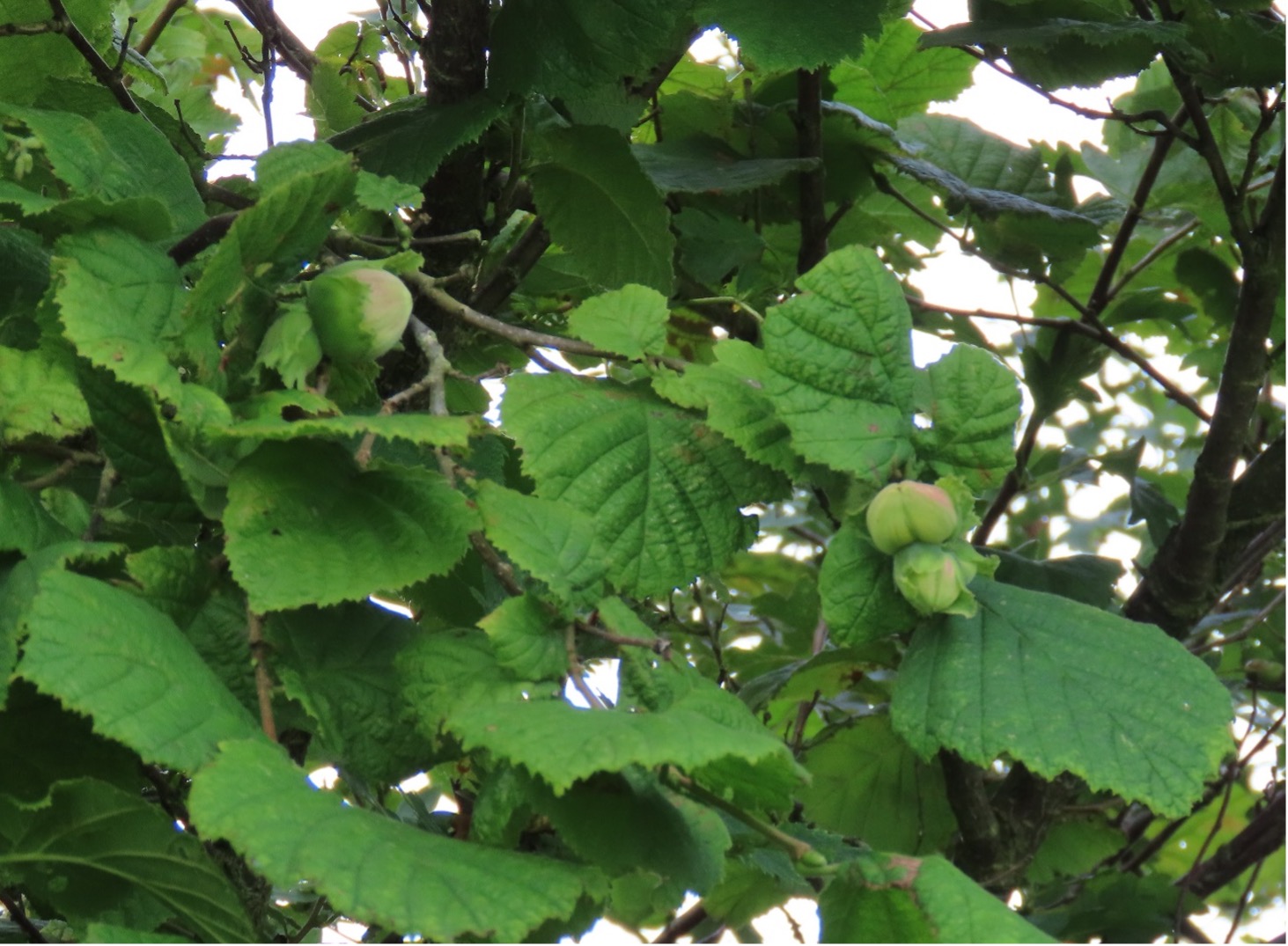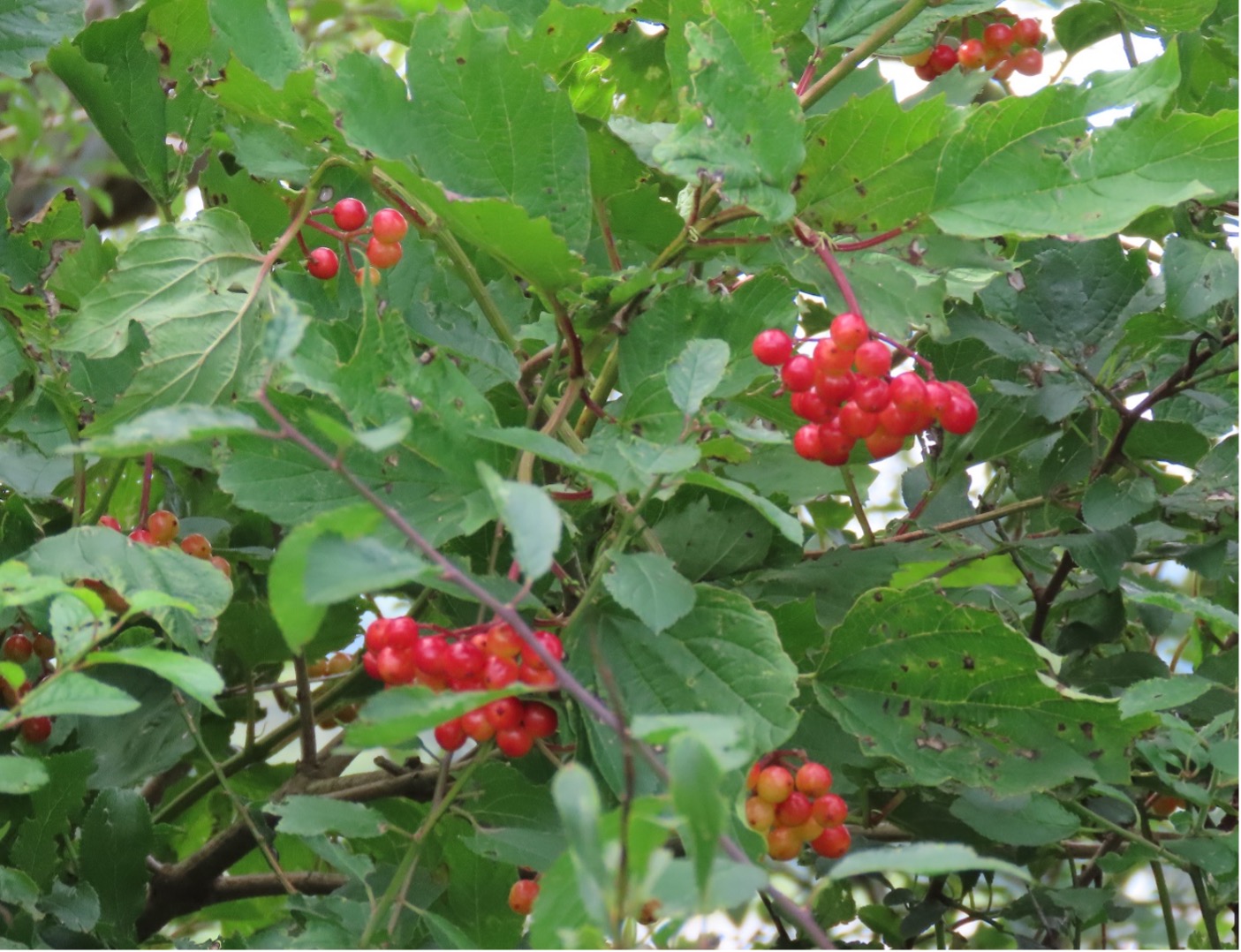The remnants of old hedgerows on the Wildlife Site and the newer hedgerows h1, h2 (planted 2005-6) and h3 (planted 2009) all contain a variety of trees and bushes. For example, the planting for Hedgerow h3 (see map), included approximately 55% Hawthorn (Crataegus monogyna), 25% Blackthorn (Prunus spinosa), 4% Hazel (Corylus avellana), 4% Dog Rose (Rosa canina), 4% Guelder Rose (Viburnum opulus), 4% Field Maple (Acer capestre), 4% Crab Apple (Malus sylvestris) and also single examples of other species, e.g. Holly (Ilex aquifolium), Oak (Quecus robur) and Horse Chestnut (Aesculus hippocastanum). The hedges provide shelter and food for wildlife. Some of their flowers, seeds and fruit are shown in the photographs below.
Hawthorn is the majority species in the new and old hedgerows throughout the Wildlife Site. Hawthorn provides a mass of white blossom in May and the red berries (haws) that ripen in September are food for a variety of birds on the site, including migrating redwing and fieldfare.
Blackthorn with its large and painful spines, is present in Hedgerows h1, h2 and h3. The white flowers appear in early spring (March-April) shortly before the leaves. Purple fruit, known as sloes, develop after pollination. Some of the blackthorn bushes have died whilst others have generated from runners, sometimes outside the intended hedgerows.
Hazel can be found in hedgerows h1, h2, h3 and field corner W3. The yellow catkins, which consist of numerous male flowers, and the tiny inconspicuous red female flowers, appear before the leaves and open in February. Hazel nuts are not fully ripe until September-October but are usually eaten before then, traditionally by dormice but also by birds including woodpeckers, nuthatches, tits, wood pigeons, jays, which are all seen on the Site.
The Common Dog Rose, a thorny climber, occurs only in hedgerow h3. It flowers May-August and bears conspicuous red hips, which each contain many hairy seeds and are eaten by blackbirds and migrating redwing.
Guelder Rose also occurs only in hedgerow h3. It has beautiful large flowerers, May-July, that are attractive to insects particularly hoverflies and clusters of bright red berries in autumn that are eaten by birds such as bullfinch and thrush.
There are two Crab Apple trees in the remnants of the old hedgerow on the eastern boundary of Field 2 and some in the more recently planted hedgerow h3 and Field Corner W1. The older trees produce prolific quantities of flower and fruit. The early flowers (April-May) are attractive to insects and the small, green-yellow, apple fruit is eaten by birds and mammals.
The Field Maple in hedgerows h1, h2, h3 are generally taller than the other hedgerow bushes. Like other Maples, Field Maple leaves turn yellow in autumn making them easily recognizable in the hedgerows. The flowers of Field Maple provide a good source of pollen and nectar for bees and other insects and the winged seeds are eaten by birds and by small mammals.
There are a few mature Holly on the Wildlife Site in remnants of old boundary hedges, and a few smaller bushes, growing slowly in more recently planted in field corners W3, W4 and hedgerows h2, h3. The familiar red berries on female bushes are eaten by birds in winter.
Photographs of Hedgerow Trees and Shrubs
Click on the photograph for larger images and captions.



















Further Information
For further information on the species in this group, please click the links below:
Hawthorn Blackthorn Field Maple Hazel Dog Rose Guelder Rose Crab Apple Holly

